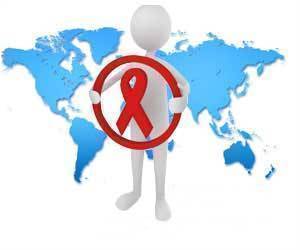Promising HIV Vaccine May Take 10 Years to Perfect
If a breakthrough in developing an HIV vaccine occurred today, scientists and drug companies would need another decade to provide a commercial product. But, after a long struggle, researchers may indeed have made that breakthrough using a new vaccine approach that combines two prior ones. Given that the AIDS pandemic has been around for 30 years and has claimed 36 million lives, with 35 million more people currently infected with the HIV virus, the long-awaited goal might finally be attainable, according to researchers attending the 13th Aids Vaccine Conference last week in Barcelona.
This optimism is refreshing because the HIV vaccine track record has not been stellar. Of the five efficacy trials to date, four proved disappointing, with two of them even indicating an increased likelihood of contracting the virus among individuals who were vaccinated. It was only with RV144 (the so-called Thai trial) that a light appeared at the end of the tunnel.
Widely discredited by some heavyweights in the field before the trial results were announced, the RV144 vaccine showed the efficacy of an approach called prime boost - combining a DNA vaccine with a protein vaccine. RV144 provided 31 percent more protection than a placebo. The modest success was enough to spark the creation of the Pox Protein Public–Private Partnership (P5), a consortium of governments, companies and nongovernmental organizations that plans to take RV144 all the way to licensed product.
Despite the optimism about RV144, other researchers still question whether governments should be investing in a vaccine instead of concentrating on prevention and treatment strategies. Yes they should, said Anthony S. Fauci, director of the National Institute of Allergy and Infectious Diseases, during a plenary speech. “An HIV vaccine is essential to durably control and effectively end the pandemic,” Fauci asserted.
Of antibodies and T cells
Researchers follow two main approaches to an HIV vaccine: antibodies and T cells. Antibodies, proteins produced by the immune system to identify and neutralize foreign objects, were big in the early years of the research, but after disappointing results interest moved to responses conducted by immune cells. This changed again with the discovery of broadly neutralizing antibodies, which are produced by 20 percent of HIV-positive individuals two or three years after infection.
 These antibodies are able to target specific regions of the virus that are important for its survival and are present in many of the different HIV subtypes. So a vaccine comprising them might be effective despite the virus’s variability, a problem that has been a considerable hurdle. They are so promising, researchers at the meeting said, that one of the recommended therapeutic approaches is to inject the antibodies directly into the bloodstreams of those at risk. Although these antibodies have been used to treat specific illnesses, they have not been considered as a vaccine substitute for the broad population.
These antibodies are able to target specific regions of the virus that are important for its survival and are present in many of the different HIV subtypes. So a vaccine comprising them might be effective despite the virus’s variability, a problem that has been a considerable hurdle. They are so promising, researchers at the meeting said, that one of the recommended therapeutic approaches is to inject the antibodies directly into the bloodstreams of those at risk. Although these antibodies have been used to treat specific illnesses, they have not been considered as a vaccine substitute for the broad population.
Another strategy is to use the parts of the HIV virus these antibodies recognize as models to teach the immune system how to make more of their own broadly neutralizing antibodies. But neutralization is not the only ability these molecules bring to the fight. The RV144 trial showed that antibodies can also battle the virus tapping other abilities that, for example, lead to the death of the infected cell.
Despite these novel investigations, researchers at the conference noted that work to exploit the body’s own T cells - immune cells that can promote a response or kill an infected cell - has not been forgotten. Although vaccines based on them have thus far failed to prevent infection, they still prove somewhat effective in therapeutic applications directed at controlling viral load in those already infected. In fact, the combination of antibody and T cell approaches is one of the avenues the researchers are beginning to explore - the holy grail being a vaccine that can prevent infection as well as control virus replication.
The way forward
As that work proceeds, experts are anticipating more results from follow-up studies of RV144 that should determine the effects of additional booster shots. One of the studies, RV305, showed that patients from the original RV144 trial displayed a spike in immune response with a boost six or eight years after being vaccinated. The P5 consortium is also planning to use the same vaccine structure from RV144 in South Africa, adapted to the HIV subtype common there.
The future will probably also see much greater cooperation among the various camps within the field: vaccinologists and pathogenicists, preventive and therapeutic vaccines, vaccine and microbicide approaches. As a matter of fact, the Barcelona meeting was the last Aids Vaccine Conference. Next year the gathering will be called the HIV Research for Prevention Conference (H4P) and will bring together the fields of vaccines, microbicides and antiretroviral drugs.
The new crossover of work and communication can only help in finding an effective vaccine, said Jose Esparza, senior advisor on global health of the Bill & Melinda Gates Foundation, during a closing plenary. It will generate even more human data, which trumps everything that is done in vitro, he said. “Different vaccine concepts need to be tested in parallel. Clinical trials are critical, especially large-scale ones,” Esparza declared. “We need to conduct our research with the necessary sense of urgency that the epidemic is imposing on us.”
###
By Fred Furtado